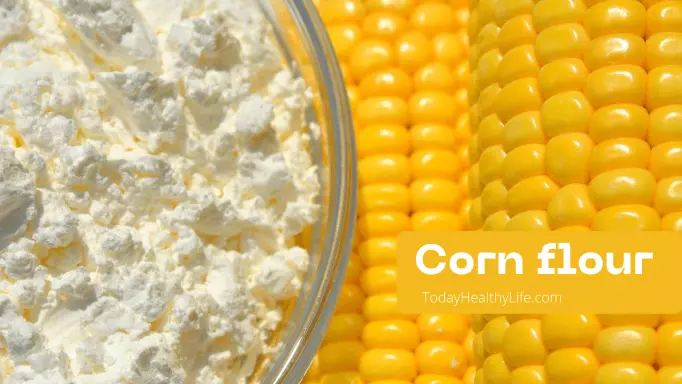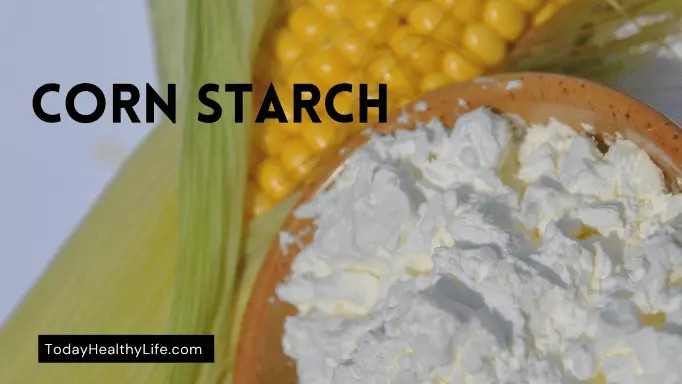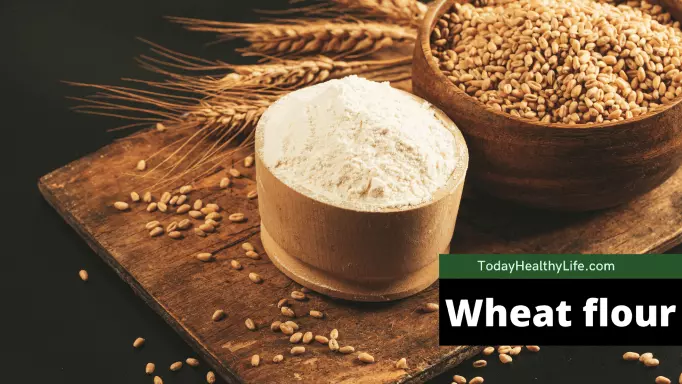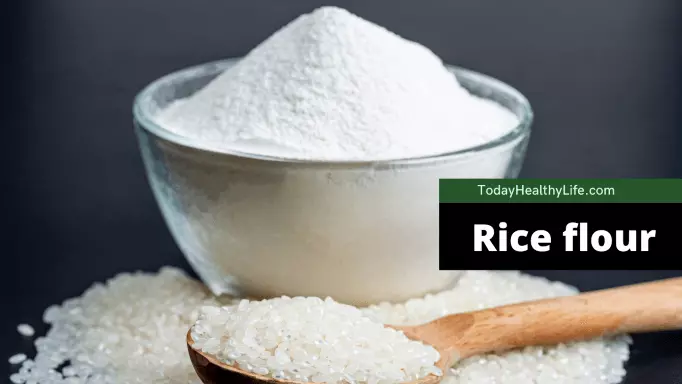Corn flour is our everyday cooking item. You will find this cooking essential in every household.
Corn flour has its own identity in making a dish worth eating with lots of nutrition. You may have seen this in the kitchen or grocery store but may not know how it works or what to do with it.
Turns out, there is much helpful information about corn flour which might attract you to buy this more often.
In this article, we will give you maximum information about corn flour, including its substitute, health benefits, nutrition, it is gluten free or not, side effects, and more. Let’s take a look at the description.

Table of Contents
What is corn flour?
Corn flour is made from grinded corn kernels. It comes in powder form in yellow, white, and blue color.
The color actually depends on what type of corn is used to make it. It has a light and smooth texture, very similar to whole wheat flour.
Corn flour is not just made from finely-milled corn kernels. There are many varieties. Because it is a whole grain flour, that’s why it also contains elements like the hull, germ, and endosperm of the corn.
For example, cornstarch comes from the endosperm part of the kernel and maize flour that is used to make corn tortillas.
Although maize flour is not similar to corn flour, it is a staple in Mexican cooking. Masa Harina is prepared from finely powdered maize kernels that have been steeped in lime water or calcium hydroxide.
The texture is undoubtedly silky and smooth. It is especially used in tortillas.
Also read:
- What is corn starch: calories, nutrition, all uses, substitute idea.
- Is corn starch gluten free? Why do females eat it, & more.
- Why do people eat corn starch? Is it bad for you, & more.
- What is Kamut flour? benefits, is it gluten-free, nutrition & all.
- Why Do Females Eat Corn Starch? – Actual Reason.
Nutrition facts
Corn flour helps to make various dishes. It makes the consistency more perfect. But the question is, is it good for our body? Is it adding any food values to our body? Let’s find out.
Corn is plant-based. It grows naturally, and its flour gives rich antioxidants and fiber. Corn flour is also a great substitute for wheat.
You can easily replace your wheat with corn flour and start your gluten-free diet. Fibers like amylose, cellulose, and lignin help to sustain a rich microbiota.
However, The answer depends on the processing of corn flour. Making process will decide if it’s healthy or not. So, always check the food values and then buy it.
Health Benefits
We use corn flour on a regular basis for several purposes. Thus, realizing the benefits of corn flour should not be hard. The list of benefits goes:
- Its rich antioxidants and fiber help to function our body parts smoothly.
- Corn flour helps to reduce fat and inflammation. You can also use this for your diet.
- Corn flour makes the digestion system better.
- Corn flour helps to sustain a rich microbiota.
Is cornstarch the same as corn flour?
We often see people get confused between corn flour and cornstarch. The main reason behind this is that they both come from corn.
Corn flour comes from finely-milled corn kernels, and cornstarch comes from the endosperm of the corn kernels.
Though they look like twins, you can differentiate them easily through their nutritional facts, making process, and so on.
There are a few similarities, but both have their differences. To clarify the confusion, we tried to present to you all the differences between cornstarch and corn flour.
If you are new to this, this might help you. Let’s get started.
- Processing: Corn flour and cornstarch both come from corn. But the twist is that to make, corn flour you will need fine powder. For that, you grind the whole corn kernels. With cornstarch, you will need the starchy part of the corn, which is the endosperm.
- Texture: The texture of corn flour is fine, and it is yellow. Cornstarch is powdery, and it’s white in color.
- Nutritional facts: Corn flour is whole grain. It provides protein, fiber, scratch, vitamin B, iron, potassium, magnesium, and so many other nutrients. Cornstarch has carbs and high starch content. It happened because when the endosperm gets removed, the nutritions also get removed.
- Flavors: They both have a distinctive taste in them. corn flour gives morn corn flavor. The reason is it comes from the whole corn. On the other hand, cornstarch doesn’t have any flavor. It’s bland because the endosperm of the corn kernels is flavorless.
- Different names: In many countries, they name corn flour and cornstarch the same. They think they both work the same, which is not true. You can differ them from their origin.
- Usage: Corn flour is mostly used in making cakes, cookies, pastries, and crackers. Basically, in every baking recipe. Cornstarch makes soup, sauce, and gravy thick. It adds thick consistency in food binding.
Corn flour and cornstarch are both common items in our kitchen. They have their similarities but also have differences which helps them to stand out from each other.
Also read: Cornstarch vs corn flour: all you need to know to compare.
Corn flour substitute
Corn flour comes from corn. There are other contents available that also come from corn, like cornstarch and cornmeal.
They can not be used as a proxy. Both have different tastes, usage, and nutrition. We have tried to combine some of the substitutes you might want to use.
To know more, let’s dig into the details.
Cornstarch

Yes, most people think corn flour and cornstarch are the same. But not they are not. As it can give a close consistency to the dish.
You can use it in particular dishes. When switching corn flour with cornstarch, remember to maintain the ratio.
Wheat flour

Wheat flour is produced by grinding wheat grains. It is not like cornstarch. It has protein, fiber, and a good amount of scratch.
So, it will actually give you a sufficient result than cornstarch. For the thickness, you will need 2 tsp wheat flour. More than cornstarch.
Rice flour

Rice flour is another substitute for corn flour. So many people use rice flour to bind the food mixture. In Asian households, they use this more often.
The benefits of using rice flour are that it adds sweetness and is gluten-free. You can easily add in your broth or soup to thicken it.
Also read: Brown rice flour: Nutrition, benefits, substitute, how to make, etc.
Potato scratch
Potato scratch is also a substitute. It came from grinding potatoes, taking the starchy elements, and making them in powder form. It has high carbs and little protein fat. No gluten.
It doesn’t add any flavor. It is recommended that you can replace cornstarch with potato scratch.
Cornmeal
If you are using cornmeal, there is a high chance it might work. The only difference is its texture.
It is highly suggested for making fried items or toppings. Cornmeal is the closest substitute for corn flour.
All-purpose flour
All-purpose flour plays a big role in making baking goods. This flour is highly refined and, you can use it to deep fry things or thicken the soup.
It is just that the coat will be thicker than others. Using quantity will be double than corn flour.
Apart from all of these, there are other alternatives, like self-rising flour, tapioca flour, arrowroot powder, masa harina, and so on. You can try them if you want to.
Also read:
- Rye flour | Dark Rye flour– gluten free or not, substitute & more.
- What is rice flour, how to make rice flour, is rice flour gluten free? substitute & all.
- Spelt flour substitute | Is Spelt flour gluten free?
Is corn flour gluten free?
Yes, corn flour is naturally gluten-free.
Corn flour makes every sauce and gravy delicious. It is a staple ingredient behind your tasty thick sauce and soup.
But is it good for your diet? For those, who have a concern for their body, they might ask, is it gluten-free or vegan? The answers are down below. Let’s take a look at the details.
If you are trying to avoid wheat, you can go for gluten-free corn flour. You will find many companies that are selling Maize flour or gluten-free corn flour.
Normally, corn flour is gluten-free. It is because Maize is corn, and corn has protein.
Whenever you are buying corn flour, look at the packaging and find out if it has gluten or not. Besides, it is plant-based. So, vegan people also can use it without any doubt.
How is corn flour made?
There are several ways of making corn flour. If you want to make it at home, you can follow the steps down below. Here it is.
Ingredients:
- 2 lbs. field corn (white or yellow)
- 2 tbsp and 2 tsp cal or pickled lime
- Three-quarter water
Instructions:
1. First, pour the three-quarter water into a stainless steel pot so that lime won’t react while connecting with metals. Keep the burner on high flame and dissolve the lime in the water.
2. Add corn to the water. Remove the floating ones and wait for them to boil. Now keep the flame in medium to low and simmer them for 12-15 minutes. The time will vary according to your recipe.
3. After that, remove the pan from the heat. Soak the corn for one hour if you are making tamales or overnight if it’s for tortillas. This process will let lime break the corn.
4. Wash the corn with cold water. Remove all the hulls. It is important to remove hulls perfectly. Otherwise, tamales and tortillas will taste like lime water. Just leave the pale white part of the kernels.
5. Dry the corn with clean towels and grind them finely in a specialized grinder, a food mill, food processor.
6. Use it immediately, or you can store it for one to three days. Also, you can wrap it in foil and keep it in a refrigerator to preserve it for one month.
What to make with corn flour?
Corn flour may be used in a variety of dishes, including bread, waffles, muffins, buttered pancakes, and fried delicacies like blinis and more.
This flour can be also be used in sauces like custard and gravy, as well as cakes and meringues. This refined flour works well as a thickener.
Cornstarch may readily replace flour as a layer for fried chicken, fried fish, and other fried foods to give them a tasty crisp.
Bread pudding, muffins, waffles, cornmeal sticks, fritter, hush puppies, and spoon bread are among the artificially leavened baked and fried dishes made with corn flour.
Wheat flour, chemical flavoring agents, sugar, salt, milk powder, and other components are commonly used in maize bread recipes.
Also read:
Side effects
If you consume an excessive amount of corn flour in your diet, Stop them immediately. corn flour is deficient in key nutrients, which might negatively influence one’s general health.
- Increases in blood sugar: corn flour might cause blood sugar levels to rise. This is because it contains a high glycemic index and is heavy in carbs (GI). It also has less fiber, which slows the uptake of sugar into circulation.
- Increases blood pressure: corn flour can enhance the flavor of your dish. However, too much of it is unhealthy. When taken in significant amounts, it might cause high blood pressure.
- Rises High Problems: corn flour abuse might have a negative impact on your heart. It goes without saying that fiber aids in the reduction of cholesterol levels. As a result, eating more corn flour than suggested might elevate a person’s bad cholesterol, often known as LDL. Later in life, one is more likely to develop atherosclerosis. corn flour use is linked to increased chronic inflammation, which can lead to cardiac problems.
- Gaining extra weight: corn flour has high in carbs and calories, and it makes you acquire weight. So, if you are not cautious with the consumption of corn flour, you might get overweight.
Conclusion
Corn flour is a versatile ingredient that offers several benefits. It is gluten-free, making it a suitable option for individuals with celiac disease, gluten sensitivity, or those following a gluten-free diet.
Since it is made from ground corn kernels, which do not contain gluten, corn flour can be used as a substitute for wheat flour in many recipes.
It can be used to thicken soups, sauces, and gravies or to make cornbread, tortillas, and other baked goods.
However, it’s important to note that cross-contamination can occur during processing or packaging, which may introduce gluten into corn flour.
To ensure that the corn flour is truly gluten-free, it is advisable to check the label or choose certified gluten-free corn flour.
This guarantees that the product has undergone testing to confirm it is free from gluten and has not come into contact with gluten-containing grains.
In summary, corn flour is a beneficial and gluten-free alternative to wheat flour, but it is essential to verify the gluten-free status by checking labels or choosing certified gluten-free options to avoid any potential cross-contamination.
